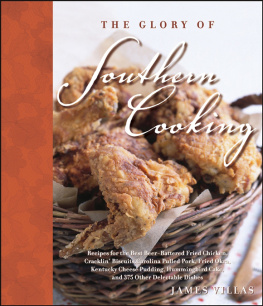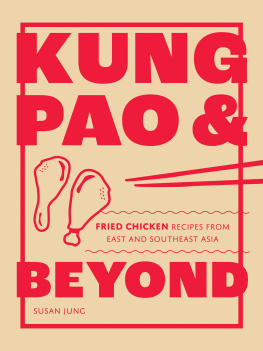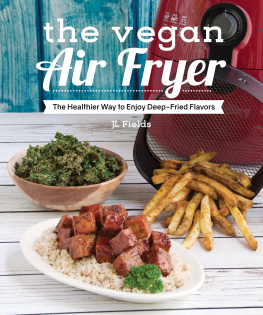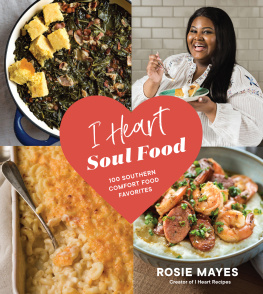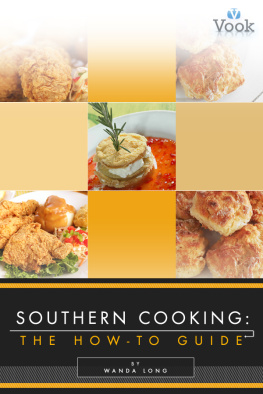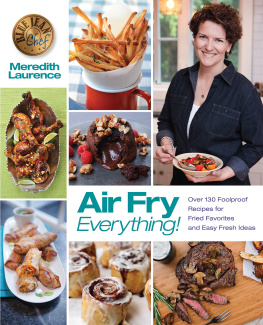Copyright 2013 by James Villas. All rights reserved.
Photography copyright 2013 by Jason Wyche
Cover image by Jason Wyche
Interior design by Elizabeth Van Itallie
Food styling by Mariana Velasquez
Prop styling by Martha Bernabe
Published by Houghton Mifflin Harcourt Publishing Company, New York, New York
Published simultaneously in Canada.
For information about permission to reproduce selections from this book, write to Permissions, Houghton Mifflin Harcourt Publishing Company, 215 Park Avenue South, New York, New York 10003.
www.hmhbooks.com
Library of Congress Cataloging-in-Publication Data
Villas, James.
Southern fried / James Villas; photography by Jason Wyche.
p. cm.
Includes index.
ISBN 978-1-118-13076-6 (cloth); 978-0-544-18824-2 (ebk)
1. Frying. 2. Cooking, AmericanSouthern style. 3. CookingSouthern states. I. Wyche, Jason. II. Title.
TX689.V55 2013
641.5975dc23
2012040262
v1.102013
To Linda and Bruce Weed
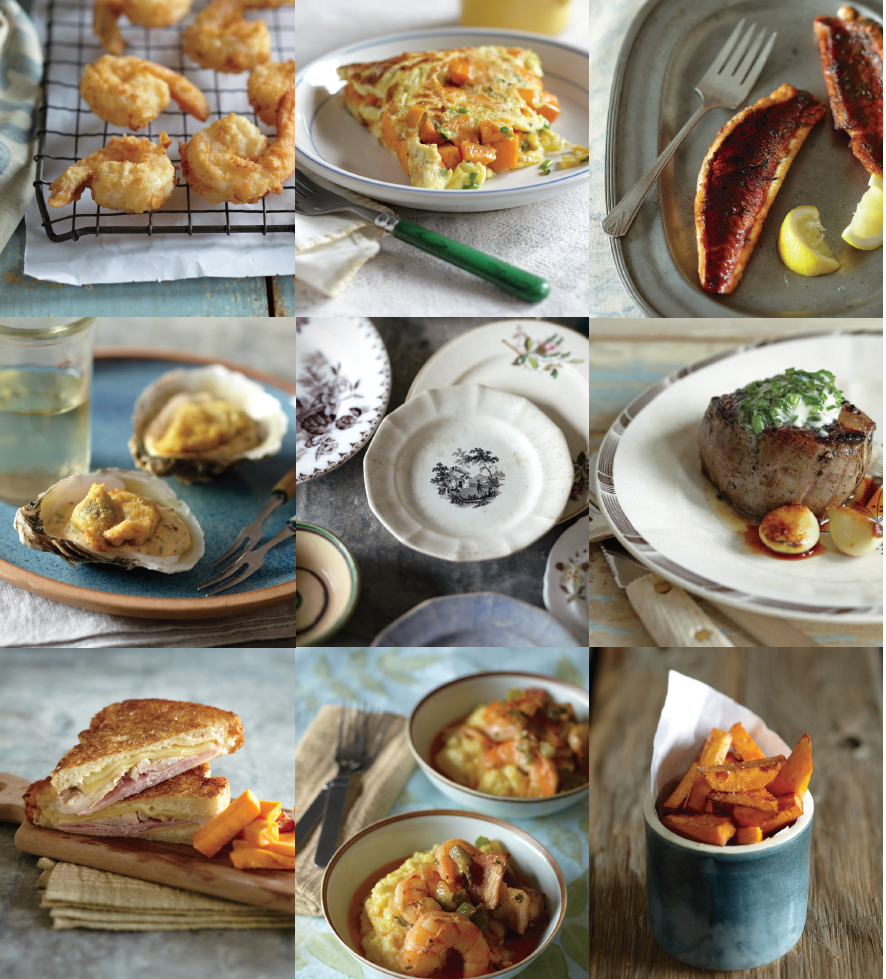
Preface
Sizzling, Crisp, and Delectable
In a nation where organicized, locovorized, artisanized, and molecularized foods are now aerated, sous-vided, nitro-poached, tweezered, and prepared in every other trendy, offbeat, outlandish, and often geeky way imaginable, lets hear a general big round of applause for those familiar, traditional, beloved ones that are still being simply... fried. And since nowhere in this country can fried food boast the same cardinal role it plays in home kitchens and restaurants throughout the South, I say its high time that special attention finally be focused on golden clam fritters, honey-battered fried chicken, crumbed pigs ears, okra beignets, rice croquettes, blistered goobers, venison burgers, hot water cornbread, peach turnovers, and dozens of other wonderful deep- and shallow-fried specialties that contribute so much to the proud Southern table.
Ill also be so bold as to say that only Southerners fully appreciate and truly understand the fine art of frying, the instinct and obsession being in our blood since the days as youngsters we were taught to batter our first pieces of chicken, heat our first skillet of lard or shortening for a batch of fried green tomatoes, and carefully lower our first basket of plump oysters into a pot of sizzling fat. Gradually we learned that frying is a process whereby hot fat coaxes moisture from the interior of foods (creating the bubbles that rise from the fat) while browning the exterior evenly; eventually we came to understand that the ideal to aim for is surfaces that are crisp without being greasy and interiors that remain tender and succulent; and perhaps the biggest lesson of all was that when fried food is executed sensibly and calmly, no style of cooking is easier, quicker, and more fun and gratifying for cooks, family, and friends alike.
Myself, I was born, bred, and weaned on fried foods in North Carolina, and today my enthusiasm is as strong as when my mother would fry thick, sapid slices of aged country ham with red-eye gravy for breakfast, or when Id get an initial whiff of crusty catfish at river fish fries, or when another bowl of piping-hot hush puppies was served with a brace of glistening quail in the Carolina Lowcountry. Southerners might not know a lot about grilling, steaming, sauting, or even stir-frying, but when it comes to cooking foods in any form of hot fat, passions are intense, convictions are rigid, and judgments can be brutal. We may be gracious and modest about most matters, but if theres a serious Dixie cook who doesnt have definitive pronouncements on what constitutes good and bad fried chicken, shrimp, pork chops, onion rings, cheese grits, johnnycakes, and half-moon fruit pies (light as a cloud, crisp but moist, lip-smacking flavor, soggy as a dishrag, greasy and disgusting, dry and tough as whitleather), Ive yet to meet such a person.
As for other Americans, what astounds me today is how so many, ridden with guilt, have been conditioned by health and nutrition zealots to spurn and even fear the very fried foods they love to eat mostand make no mistake that, despite feigned denials, theres nothing we relish and crave more than well-fried chicken, potatoes, onions, sandwiches, and doughnuts. Folks are led to believe that all fried foods are automatically messy and dangerous to prepare, heavy and greasy, difficult to digest, packed full of dreaded calories and cholesterol, and generally a disaster. Hogwash. It is true that many of the dishes made with inferior ingredients and carelessly fried in old, stale fat at mediocre restaurants around the country can be pretty lousy, and nobody denounces the atrocities more than Southerners accustomed to better fare. Its equally true that frying is a cooking process that requires the right equipment, attention to certain sensible safeguards, and a willingness to make mistakes before the techniques are fully mastered. But its also true that, since fried food is best within minutes of being removed from the bubbling fat, nothing lends itself more to the convenience, ease, and casual atmosphere of the home kitchen, and that once youve become hooked on the procedure, youll grasp why Southerners have always championed fried foods over all others.
While there can be no doubt that the dishes celebrated in this book constitute a large percentage of the Southern diet, nothing is more misguided than the common perception that Southerners nourish themselves exclusively on fried foods without concern for moderation, nutritional values, calorie counts, and overall well-being. Just the basic information in the books Introduction (which I encourage you strongly to review) should serve to prove that Southern cooks approach every aspect of frying very seriously and intelligently, and that we have little patience with those who might blindly condemn a style of cooking that, when handled with a bit of know-how and lots of common sense and respect, is altogether as disciplined, sophisticated, refined, and, indeed, healthy as any other. We Southerners view these dishes as the ultimate comfort foods, and we enjoy nothing more than sharing them with those who love and appreciate great eating. Its my bet that once you get the hang of frying, perfect your own ideas and strategies, and gather a few equally eager souls in the kitchen and around the dinner table, youll derive the same relaxed joy and satisfaction from the exciting experience as any Reb does.
Introduction: Frying Basics
Equipment
Electric Automatic Deep Fryers. Available in all major stores under familiar brand names (Cuisinart, Calphalon, Hamilton Beach, Presto, Waring, and so on). Most modern-day countertop electric fryers boast such up-to-date sophisticated features as lockable lids, heavy wire mesh baskets with cool-touch handles, digital thermostats and timers, special filters to reduce odors, viewing windows, removable parts for easy cleaning, indicator lights or audible alarms for overheating, and even detachable magnetic cords for added safety. Storage can be a problem with models that are not compact, but today nothing is more reliable, easy to use, and safe than a sturdy single- or dual-basket deep fryer that can accommodate up to a gallon of oil and 2 pounds of food and is intended mainly for items that need to be immersed in at least 2 inches of hot fat. I have a compact dual-basket fryer that I find fully adequate for such smaller foods as oysters and shrimp, zucchini strips and onion rings, French fries, hush puppies, fruit turnovers, and the like. Prices vary dramatically from about $50 up to $300, depending on the size, style, quality of metal, and special features.


